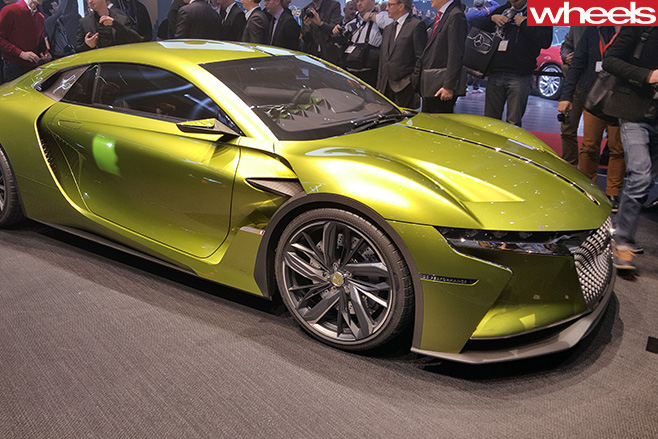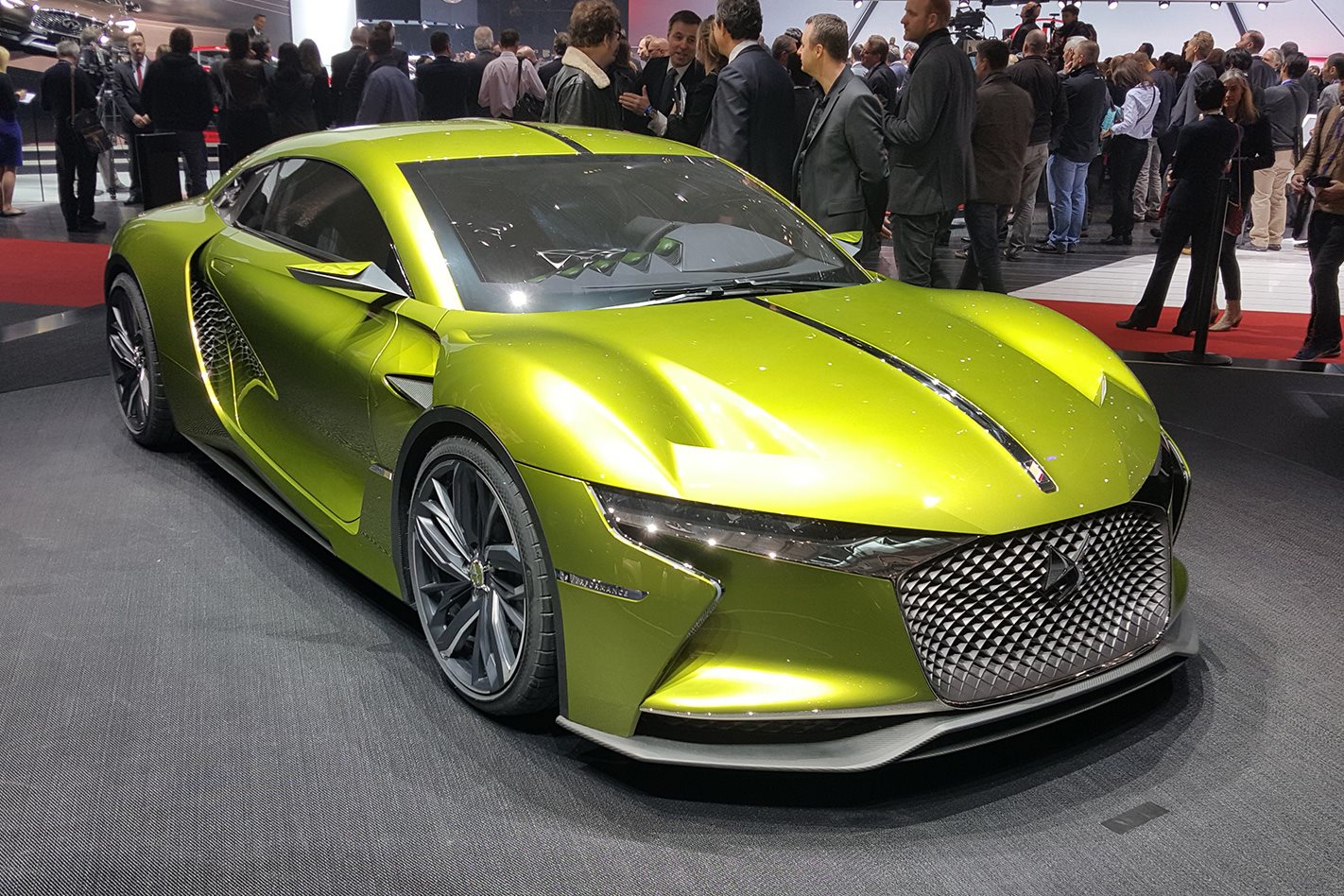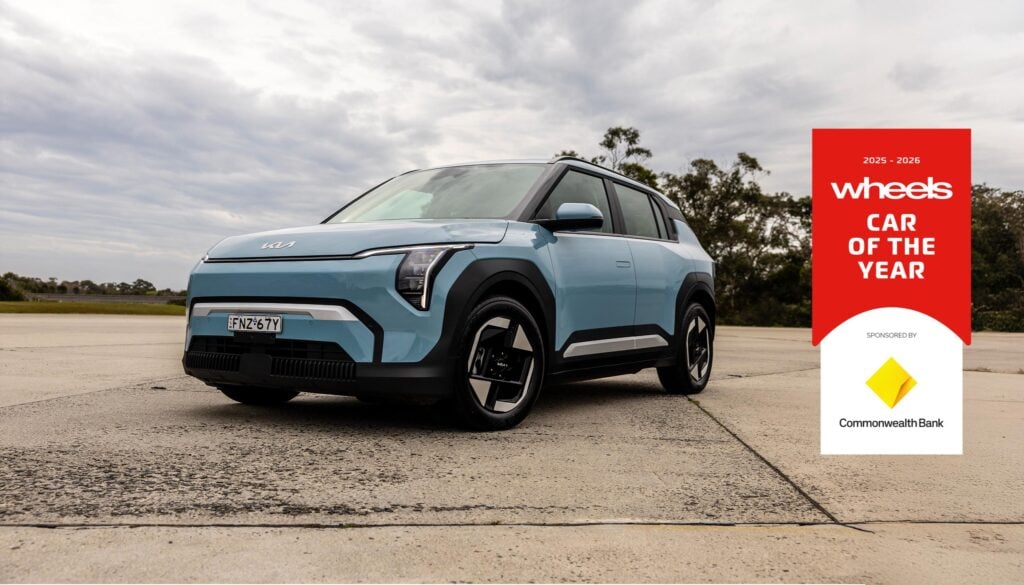The DS E-Tense will be a $400,000 all-electric Tesla rival if it makes production, says the boss of Citroen’s premium brand.
Revealed in full today at the Geneva Motor Show, the aggressively styled, carbonfibre-bodied two-door coupe boasts a 300kW/516Nm electric drivetrain capable of travelling 360km between charges.
And despite its concept car looks, everything about the E-Tense is viable for production, according to DS boss Yves Bonnefont.
“This is a real car, it is not a concept car,” he said. “It drives 0-100km/h in less than 4.5 seconds – you can imagine this is not the kind of performance a concept car can achieve. So this is very much like a car we could build.”
As for whether DS does plan to build it, Bonnefont was less decisive.
“You know this is clearly an object that we’ve put on the table for the future, so we will see where it goes but it is clearly a great object,” he said.
DS claims the drivetrain in the E-Tense was built using expertise garnered from the brand’s involvement in Formula E Racing. Drive is sent to the rear wheels via a three-speed gearbox, while power comes from a 53kWh battery pack mounted under the floor. The whole car weighs around 1800kg.

“If we were to manufacture this car it will be at a price about 250,000 euros,” Bonnefont said.
“That’s the kind of price we are looking at. We are quite different from any existing brand including Tesla, in the way we treat the materials. Our mission as a brand is to really go one step further than any other brand in the market. We are a Parisian brand and our mission is to enhance the luxury and fashion of our car.”
This goal is obvious in the E-Tense’s striking interior, which blends a steel dashboard with hand-painted leather panels and a clock by high-end watch maker BRM Chronograph.
It also has no rear window, with rear vision instead provided by a rear-mounted camera that projects images onto a screen inside the cabin. Expect to see this is system make production on at least one future DS model.
“Today this system is still pending homologation issues but it is something we are working on,” said Bonnefont. “The strategy of DS is a 20-year strategy, so we need to move on a step by step basis. We have completed stage one with the new DS3, so we are going to continue to grow over the next 20 years and now is the time for us to accelerate.”






